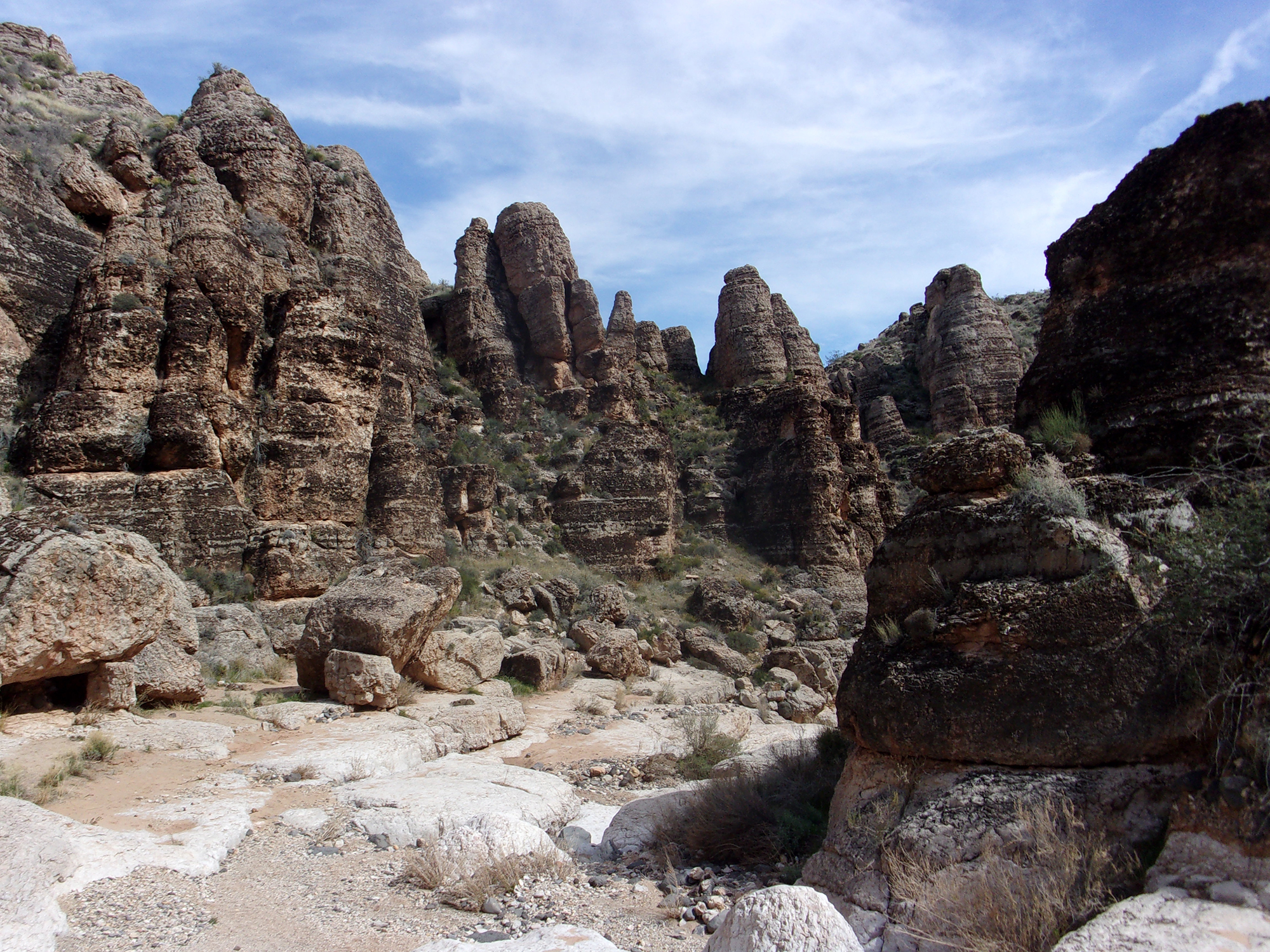
Quail Canyon (aka Fossil Canyon) in the Arizona Strip
– By Tom Garrison –
Location: Quail Canyon (aka Fossil Canyon) is located in the Arizona Strip about eight miles south of St. George, Utah. There is no entrance fee an no permit is necessary. It is managed by the Bureau of Land Management
Difficulty: Some moderately strenuous rock scrambling in Quail Canyon on an otherwise easy hike.
Average Hiking Time: About two hours at a leisurely pace with many stops.
Elevations: Approximately 3,990 feet trailhead elevation with about a 200 feet elevation change from the lowest to highest point.
Family Friendly: Yes, although some of the rock scrambling in Quail Canyon might be difficult for young children.
Getting There: From St. George take River Road south which becomes a dirt road, Bureau of Land Management (BLM) Road 1069, as you cross into Arizona. Follow BLM Road 1069, it is a good dirt road that spools out ahead of you to the horizon. At 7.5 miles from the Arizona border, on your right, is an unsigned dirt road with a steel cable attached to two metal poles stretched across it. Turn right here down a slight slope and park near the blocking cable. This is the trailhead and parking area which has space for about five cars.
You can also reach the site by traveling south on Interstate 15 to the Southern Parkway exit (Exit 2). Take Exit 2, go east three miles, and exit (Exit 3) onto River Road going south. Then follow the above directions from there.
Need a new hiking adventure? Maybe something a bit different from the admittedly wonderful red sandstone of southwest Utah? How about an isolated dark-hued narrow canyon layered with fossils and located in northwestern Arizona. And it is less than eight miles from St. George. Your destination, as it was ours, is Quail Canyon, often referred to as Fossil Canyon. If you want an easy hike with some fairly strenuous rock scrambling in the canyon, give this three-mile round trip adventure a try.
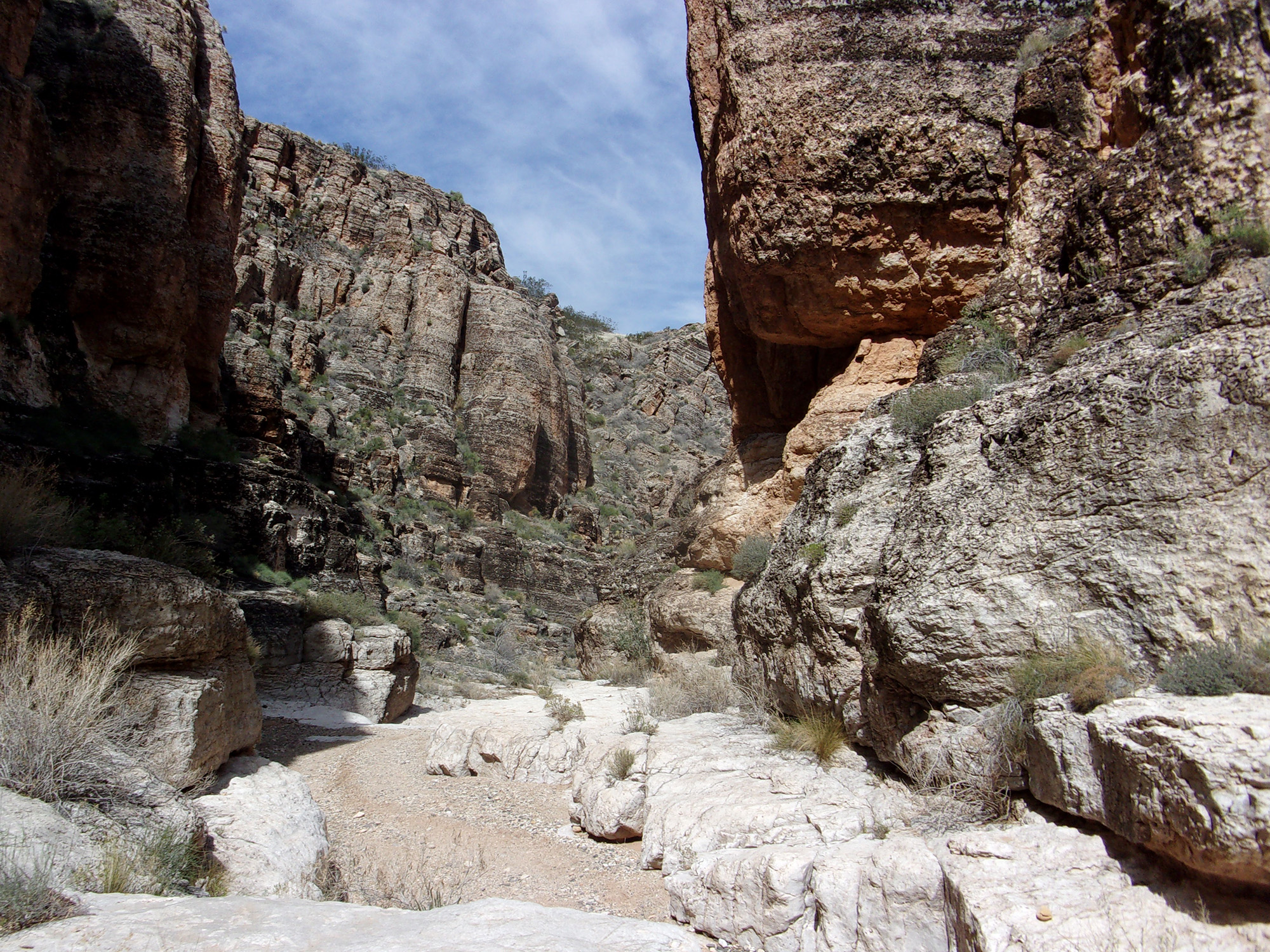
My wife Deb and I began our expedition on a mild Thursday morning in mid-March. We reached the trailhead about 10:30 am with the temperature in the mid-50s under a blue Arizona sky. The trailhead elevation is 3,990 feet with an approximately 200 feet elevation change from the lowest to highest point.
We parked near the steel cable and headed north on the dirt road that is blocked by the cable. The road quickly turned, and we went west. It is a wide dirt road crossing some small hills. After approximately ¾ of a mile of uneventful walking, we came to a corral and two large water tanks. After exploring a bit, we followed a trail marking sign and went left (south) around the water tank and through a green metal gate. Remember to close and latch the gate after you pass through.
We followed the trail, situated above the dry canyon wash, a couple of hundred yards. The route descends into the wash and we entered the mouth of Quail Canyon.
At the mouth of the canyon the walls are blackish and a kind of dirty white color. This color scheme continued throughout our trek up the canyon. As with many canyons, the distance between walls varied as we walked deeper into the gorge—sometimes ten feet separating the walls, sometimes 50 feet. Also like many canyons Quail Canyon is serpentine. Go around one bend and there is another. One interesting feature were a couple of sections of “subway” canyon. The bottom of the canyon walls was eroded in a circular fashion, like a subway tunnel. If you have seen photos of or hiked The Subway Trail in Zion National Park, these sections looked similar.
We began looking for fossils as we entered the canyon. There were many embedded in the whiteish rocks. Almost all were small and indistinct. We just looked and did not take any.
I know visitors to this canyon will be tempted to take home a few fossils they find in the rocks or chip out of the walls. Here is what the BLM says about collecting fossils:
Only researchers operating under a BLM permit are allowed to collect vertebrate fossils such as dinosaurs, mammals, fish and reptiles as well as uncommon invertebrate or plant fossils.
You may collect reasonable quantities of common invertebrate fossils such as mollusks, and trilobites, but this must be for personal use, and the fossils may not be bartered or sold.
So, if you happen to find a tyrannosaurus or woolly mammoth fossil, leave it and alert the BLM office.
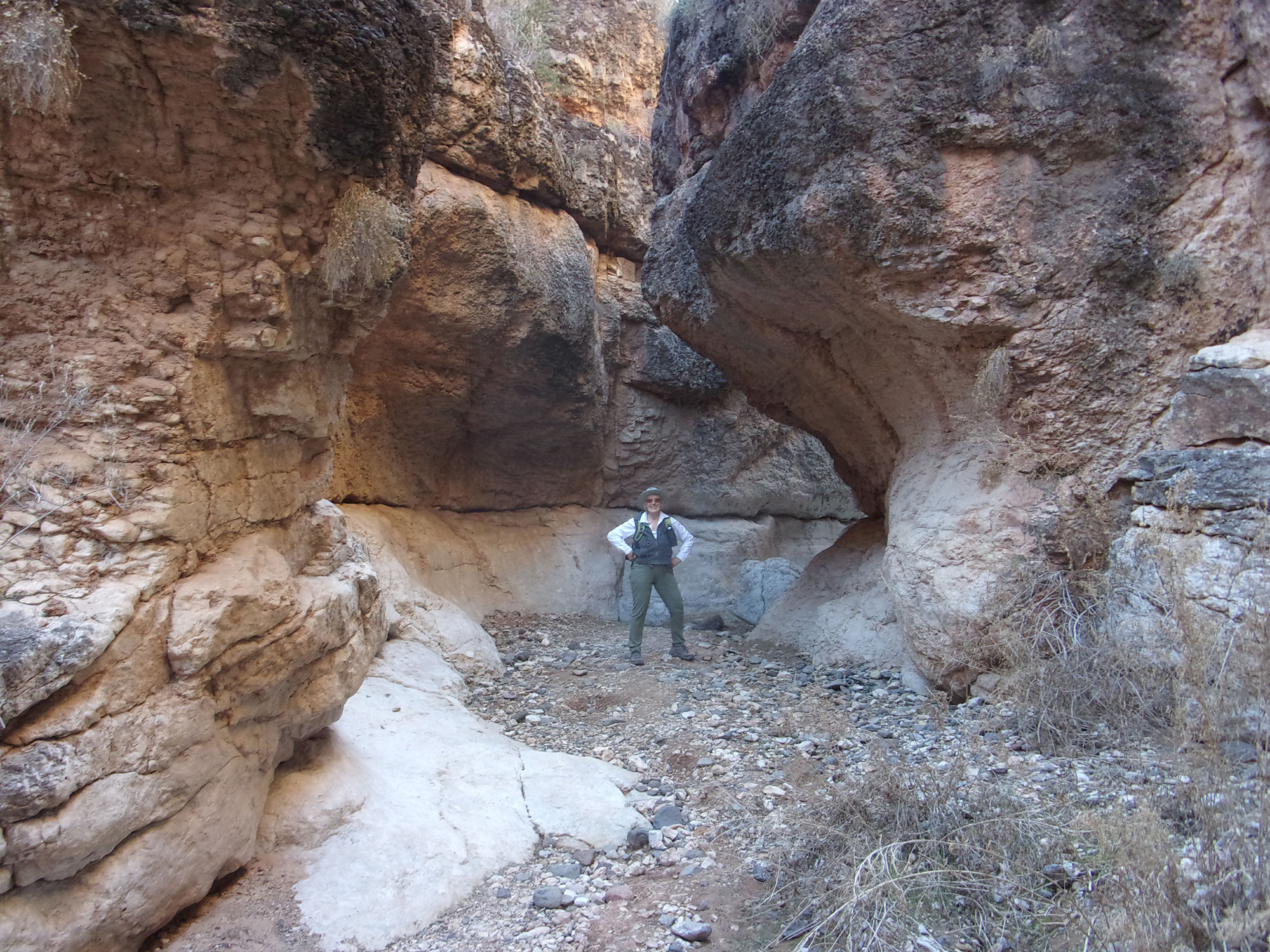
Overall, the hike up the canyon is easy, if you ignore the three or four rock obstacles. Scrambling over these is a bit of a challenge if you are in your 70s as are we. We helped each other and closely looked for the best way to climb an eight foot dry fall with small hand and foot holds. We made it, so can you.
About ½ mile in the canyon, we scampered over another obstacle and above it the canyon widened. After another ¼ mile or so, we came to what was for us, the end. There was an almost vertical 25 feet rock wall lacking good hand and foot holds. There was, however, a rope hanging down from the top. No way were we trusting a rope that might have been there for years. And no way we could climb the rock wall without using the rope. And, just our luck, we forgot to bring our sticky fingers Spiderman gloves with which we could have easily scampered up the dry fall.
We turned around and headed downstream. During the hike we saw a couple of birds of prey, but no other animals. We returned to the trailhead about two hours after we left—pretty slow for this hike.
This was an odd hike. As we began the hike, three ATVs pulled into the trailhead parking area. We went back a bit and talked to the people—seven men and women in our age bracket (60s and 70s). They all knew each other, were friends, and lived in the St. George area. It is very unusual to have nine people (counting me and Deb), especially older ones, do a remote hike in the Arizona Strip on a Thursday morning. Plus, the two groups, Deb and I and the other seven, arrived at the trailhead about the same time. We expected to not see another person on this isolated hike. Fortunately, the other folks quickly became our new best friends, and we did the hike as one large group.
If you want to explore an isolated darkish canyon with many small fossils embedded in the rock, try Quail Canyon. I doubt if you will experience the “mob” scene that we did. You will probably hike alone.
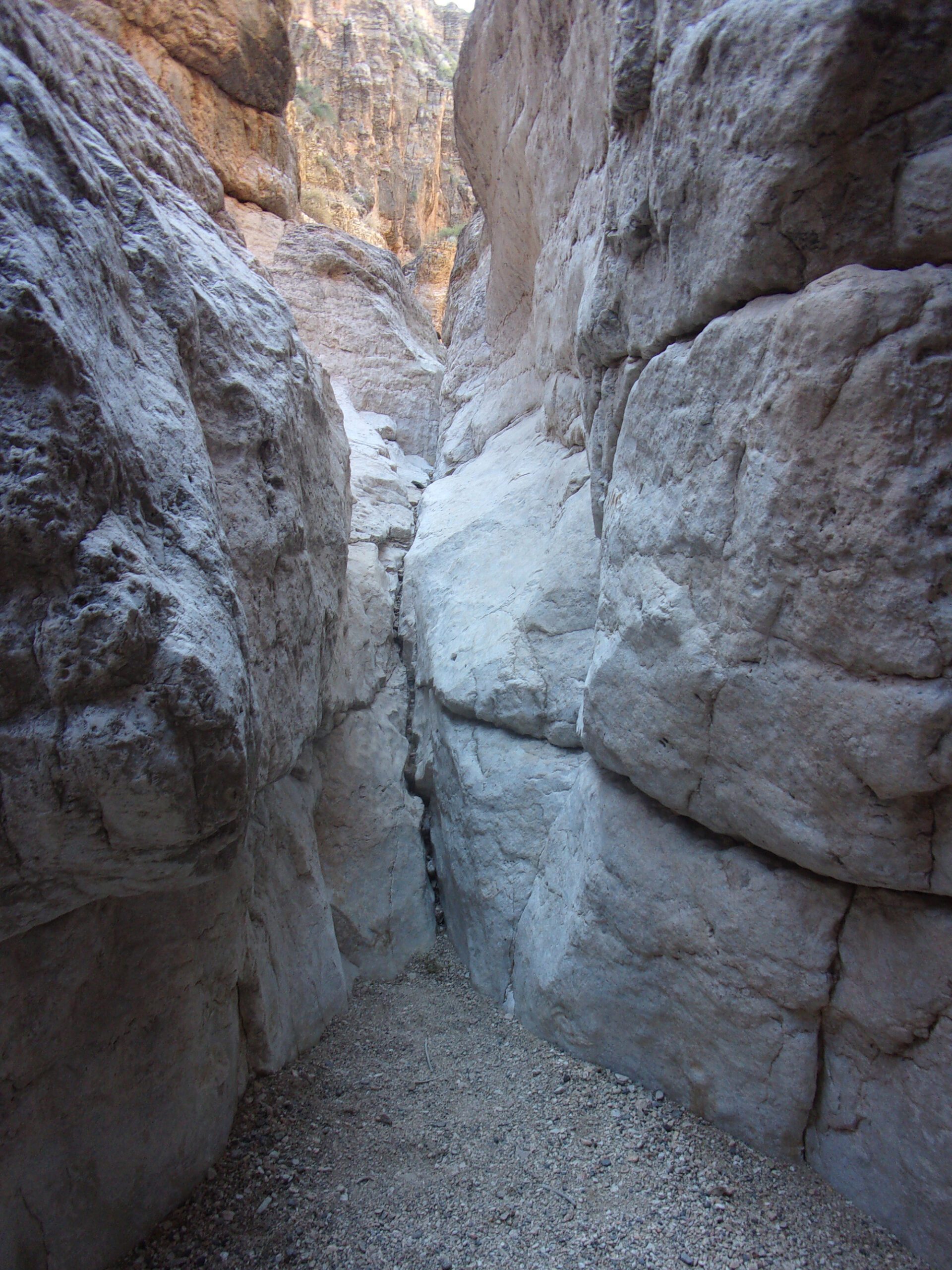

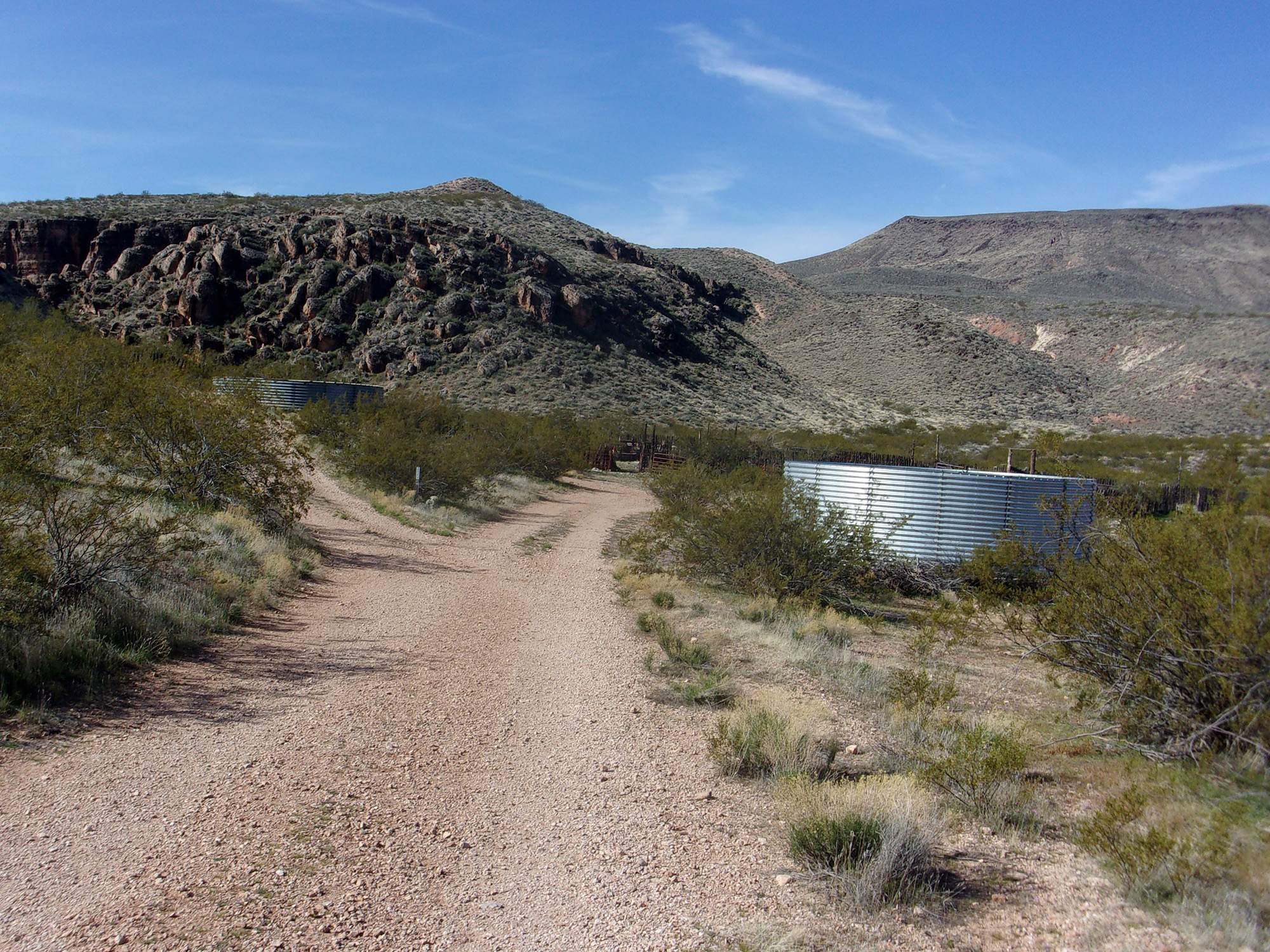


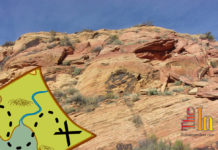
Would you please tell me what kind of gloves with sticky fingers you use for this type of climbing? We’re planning to visit this canyon soon. Thank you very much!
It was a joke. We do not have any Spiderman sticky fingers gloves. If you hike the canyon, be prepared to doing some semi-serious rock scrambling.